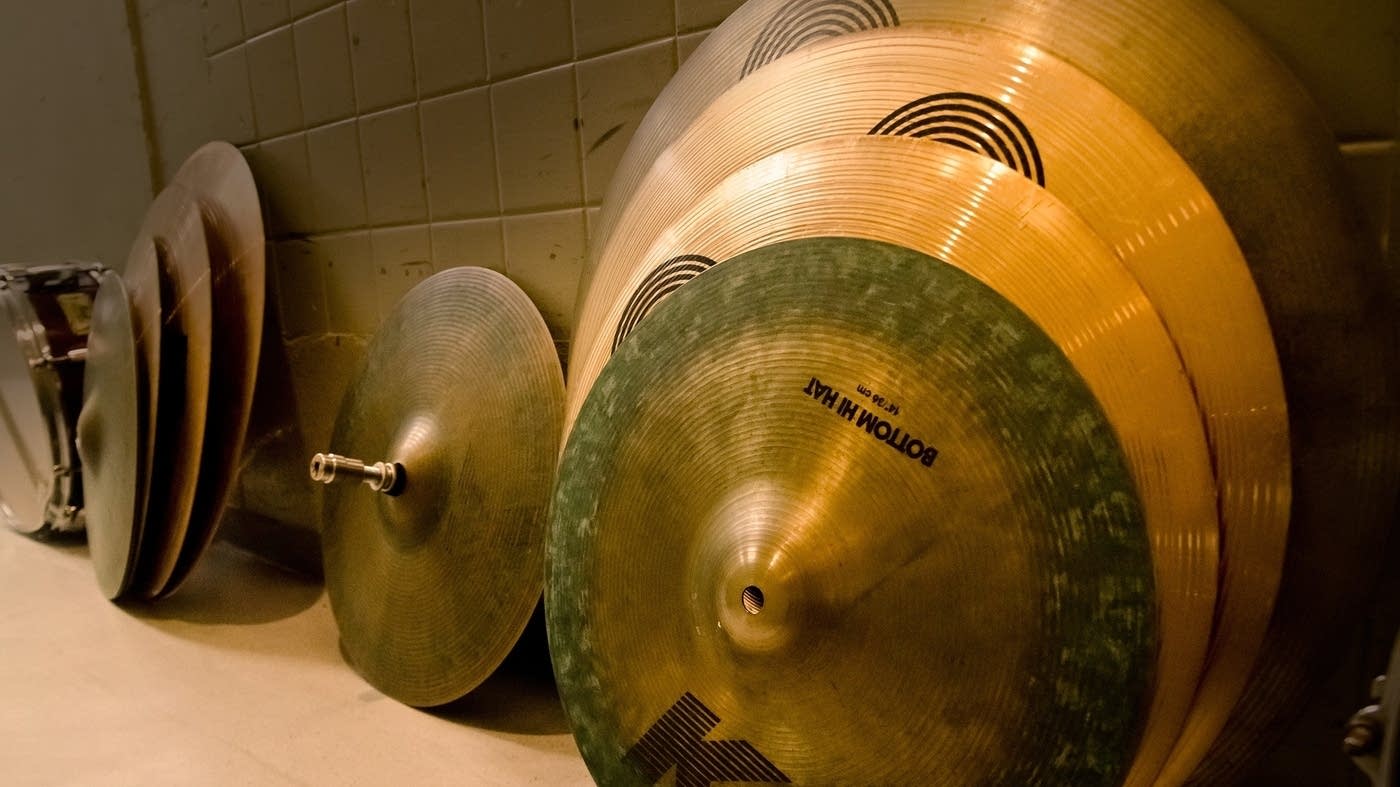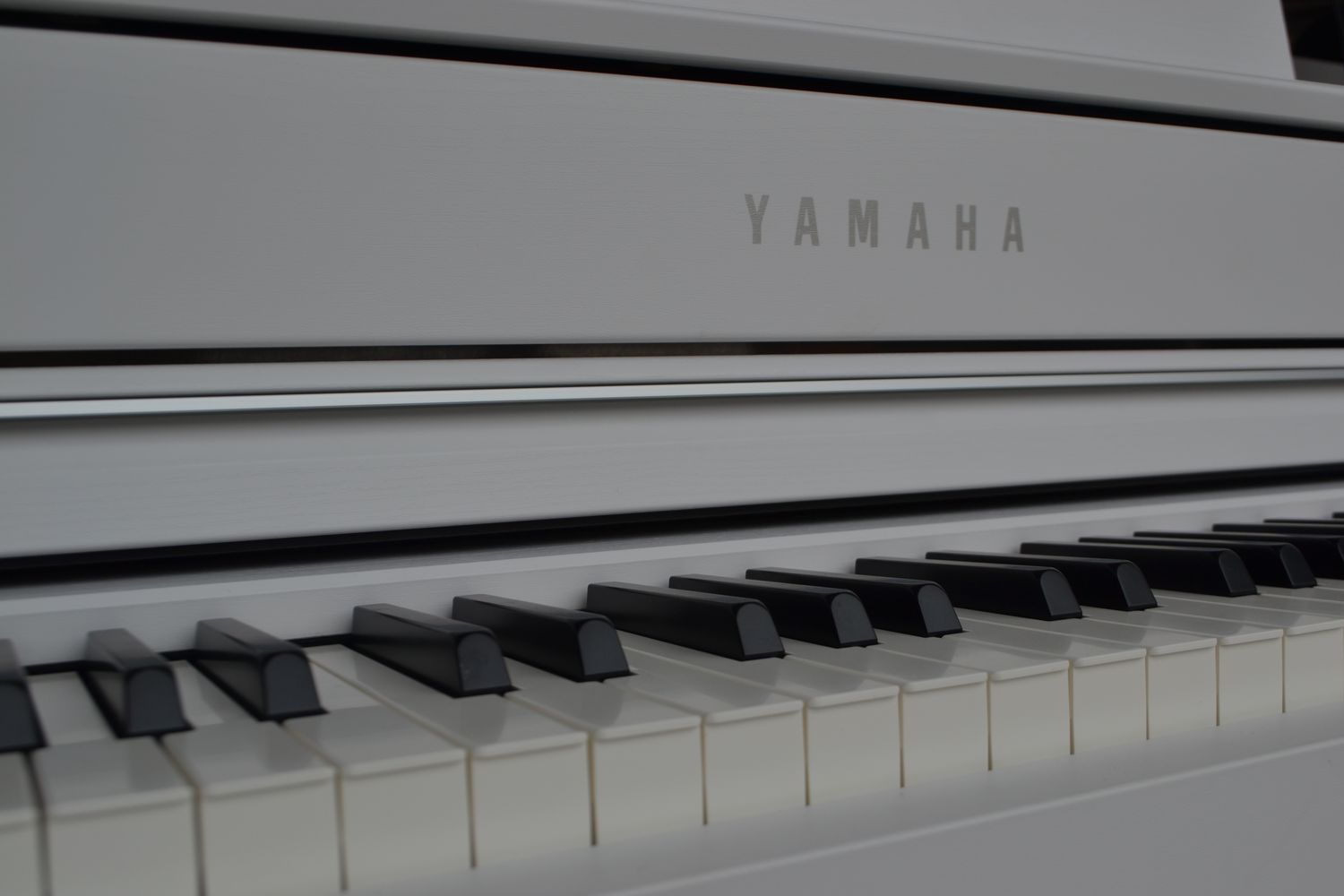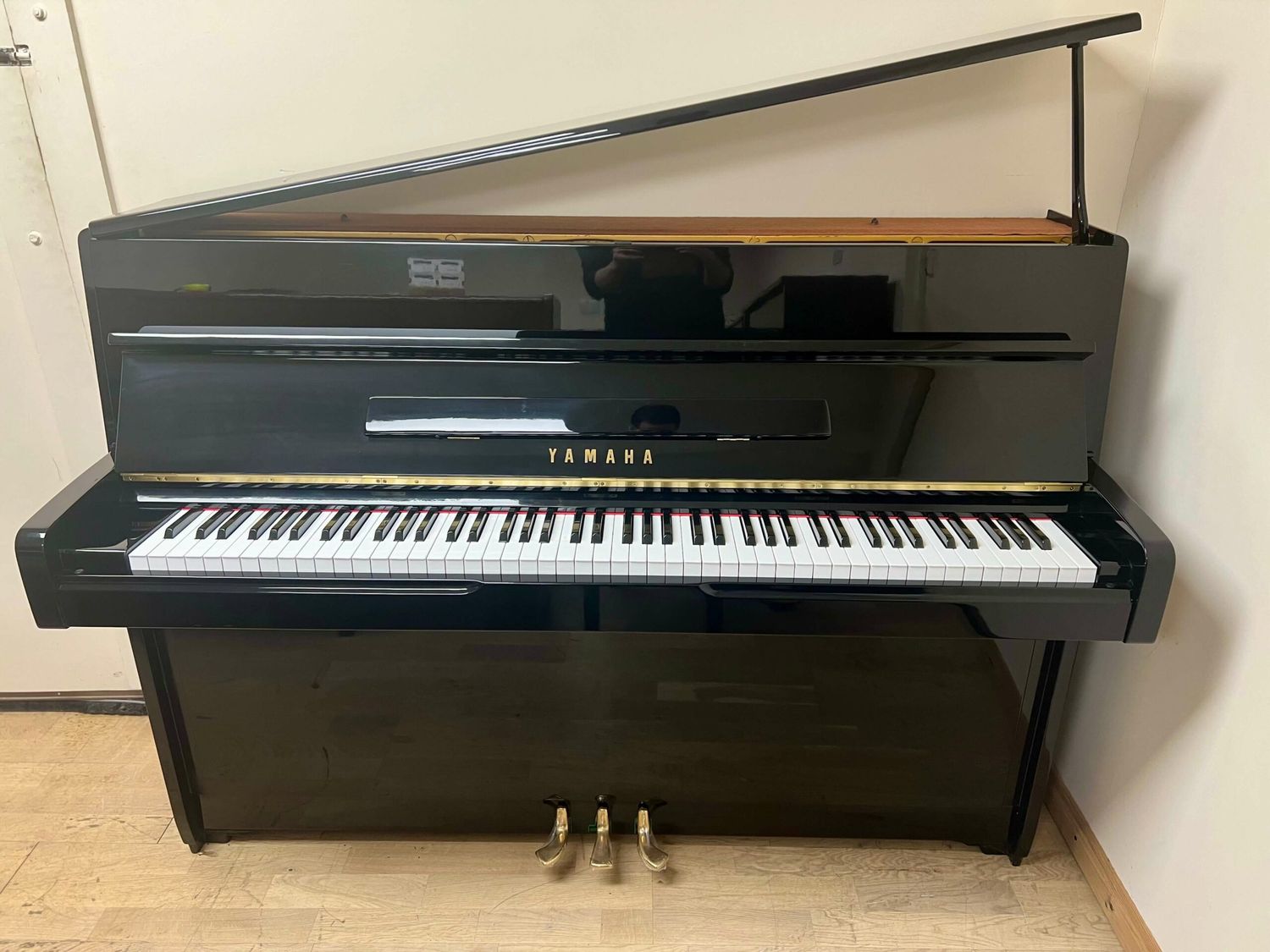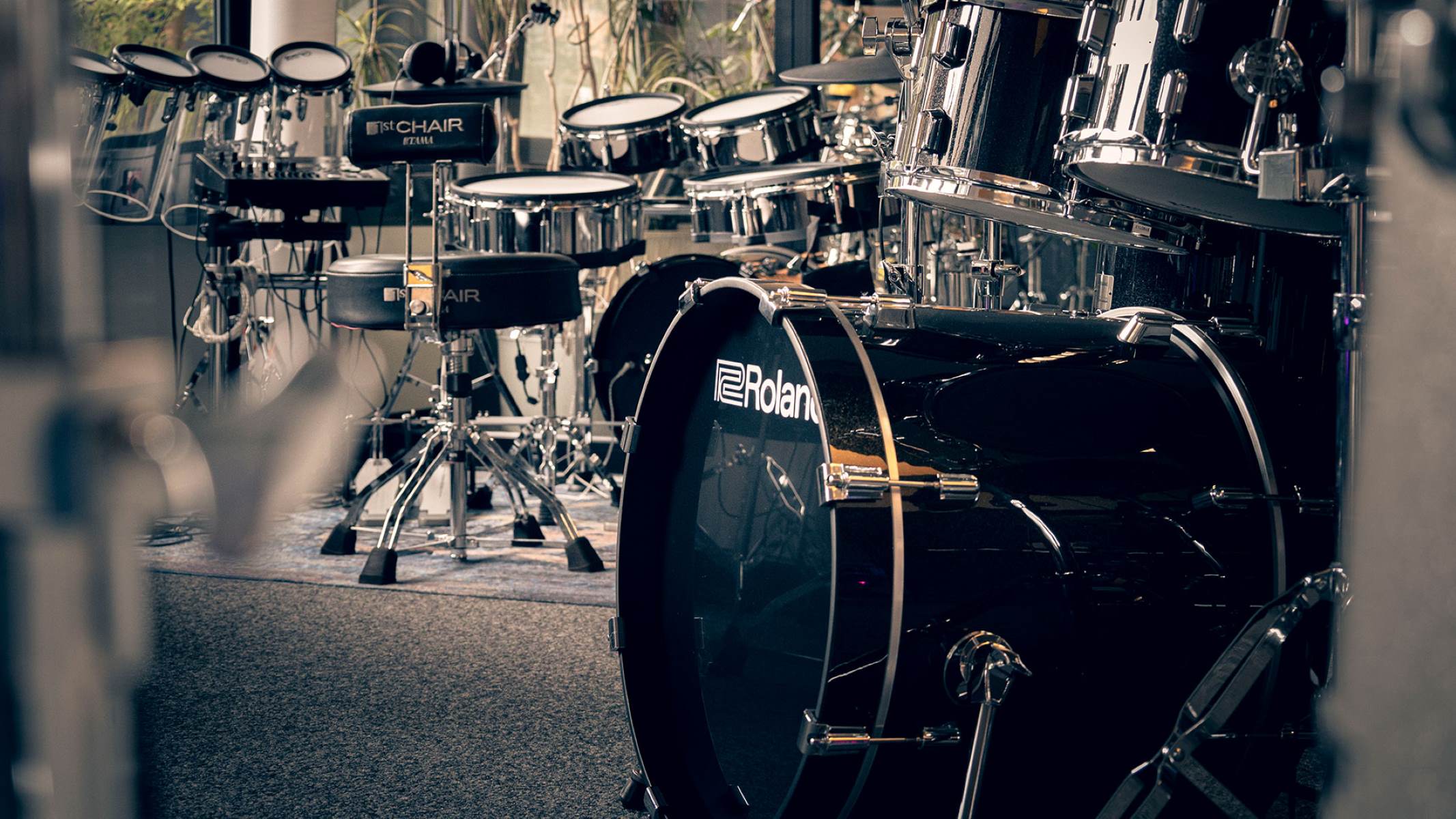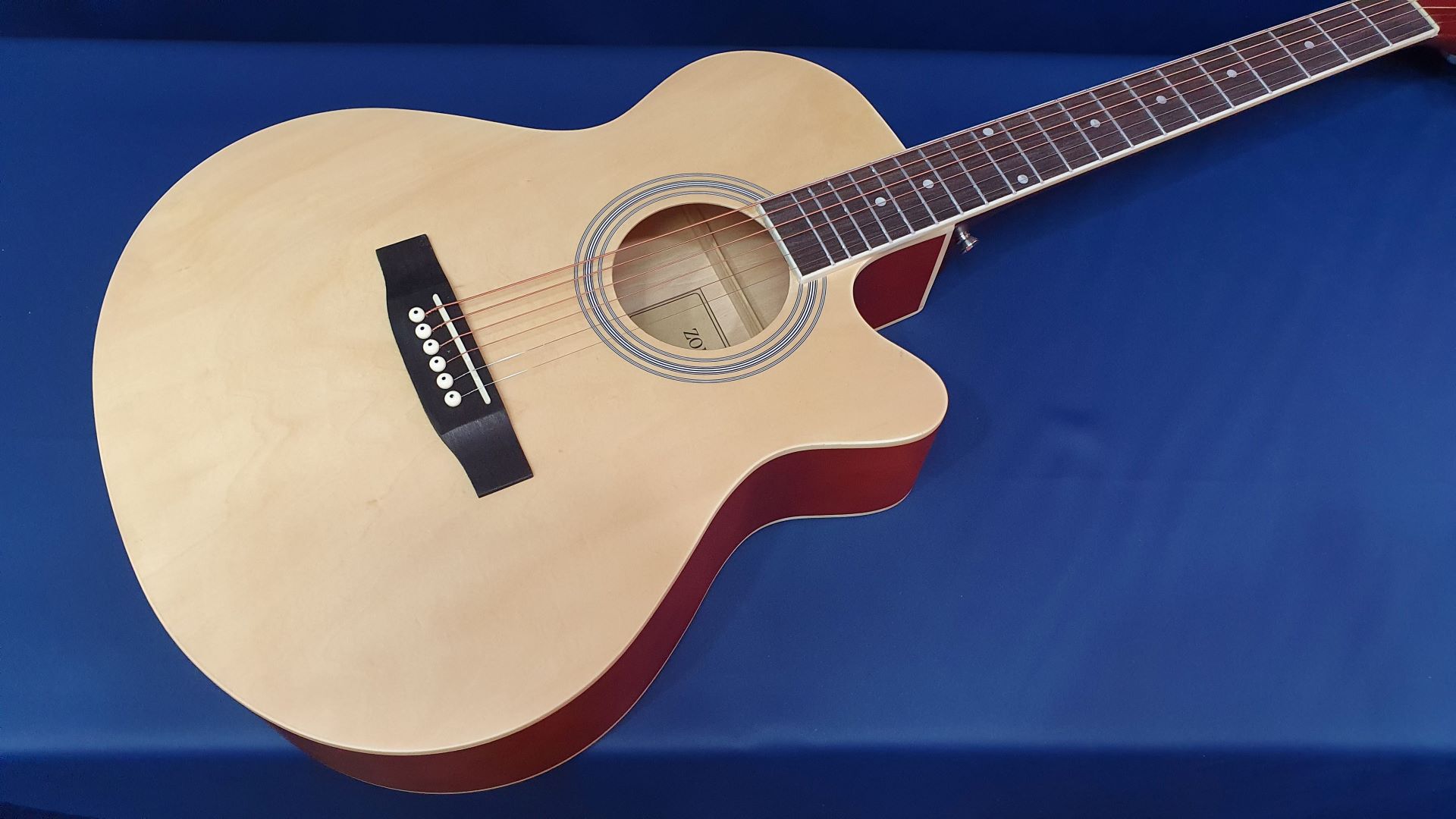Home>Production & Technology>Acoustic>What Is An Acoustic Drum Set


Acoustic
What Is An Acoustic Drum Set
Published: March 12, 2024
Discover the versatility and power of acoustic drum sets. Learn about their components, sound, and how to choose the best one for your needs. Explore the world of acoustic drums today!
(Many of the links in this article redirect to a specific reviewed product. Your purchase of these products through affiliate links helps to generate commission for AudioLover.com, at no extra cost. Learn more)
Table of Contents
Introduction
Acoustic drum sets are the heartbeat of music, providing the rhythmic foundation that drives the energy of a performance. These timeless instruments have been an integral part of musical expression for centuries, captivating audiences with their powerful and dynamic sound. Whether in a small intimate setting or a grand concert hall, the unmistakable resonance of acoustic drums commands attention and sets the tone for the entire musical experience.
The allure of acoustic drum sets lies in their ability to produce rich, organic sounds that resonate with depth and character. Each strike of a drumstick against a drumhead creates a unique sonic imprint, infusing the music with emotion and intensity. The acoustic nature of these drums allows for a wide range of tonal nuances, from thunderous booms to delicate whispers, enabling drummers to craft intricate rhythms that elevate the music to new heights.
Beyond their sonic capabilities, acoustic drum sets possess a tangible presence that transcends the auditory realm. The physicality of striking a drum and feeling the reverberations through the body creates a visceral connection between the drummer, the instrument, and the music. This tactile experience adds a layer of authenticity and raw energy to live performances, drawing the audience into the pulsating rhythm and creating an immersive sonic landscape.
In the world of music, acoustic drum sets serve as the cornerstone of rhythm, providing the essential framework upon which melodies and harmonies are woven. Their timeless appeal and versatility make them a staple in a wide range of musical genres, from rock and jazz to pop and blues. Whether driving a driving beat, laying down a syncopated groove, or punctuating a climactic moment, acoustic drum sets play a pivotal role in shaping the sonic identity of a musical composition.
As we delve into the intricate components and diverse types of drums that comprise an acoustic drum set, we will uncover the multifaceted nature of these instruments and explore their enduring significance in the world of music. Join us on a rhythmic journey through the captivating realm of acoustic drum sets, where each strike of a drumstick resonates with the pulse of creativity and passion.
Components of an Acoustic Drum Set
An acoustic drum set is a meticulously crafted ensemble of percussion instruments, each contributing a distinct voice to the rhythmic tapestry. These components work in harmony to create a symphony of sound, embodying the essence of musical expression. Let's explore the fundamental elements that form the backbone of an acoustic drum set:
-
Bass Drum (Kick Drum): The bass drum serves as the heartbeat of the drum set, producing deep, resonant tones that underpin the rhythm. Positioned on the floor and played with a foot pedal, the bass drum delivers powerful thumps that drive the music forward with unwavering force.
-
Snare Drum: Renowned for its crisp and penetrating sound, the snare drum adds a sharp, staccato punch to the rhythmic cadence. Characterized by its distinctive metal wires or "snares" stretched across the bottom drumhead, the snare drum imparts a lively and vibrant texture to the overall drum set sound.
-
Tom-Toms: These drums come in various sizes and are mounted on the drum set, typically positioned above the bass drum. Tom-toms contribute melodic and rhythmic accents, offering a diverse range of tonal colors that enrich the drumming patterns with depth and complexity.
-
Hi-Hat Cymbals: Comprising a pair of cymbals mounted on a stand, the hi-hat cymbals are operated by a foot pedal and can be played in a closed or open position. Their versatile nature allows drummers to produce a spectrum of sounds, from crisp and tight to shimmering and expansive, adding dynamic layers to the rhythmic landscape.
-
Crash Cymbal: With its explosive and shimmering character, the crash cymbal punctuates the music with dramatic accents and climactic flourishes. Its vibrant resonance cuts through the sonic mix, creating moments of heightened intensity and driving the musical momentum to exhilarating peaks.
-
Ride Cymbal: Known for its clear and sustained tones, the ride cymbal offers a steady and defined foundation for the rhythmic groove. Its distinctive ping and wash contribute a sense of continuity and fluidity, allowing drummers to craft intricate patterns and maintain a cohesive pulse.
-
Hardware: The hardware components, including stands, pedals, and mounts, provide the structural framework that supports and positions the drums and cymbals. These essential elements ensure stability and functionality, allowing drummers to perform with precision and confidence.
Assembled with meticulous attention to detail, each component of an acoustic drum set plays a vital role in shaping the sonic landscape, offering a diverse palette of tones and textures that enrich the musical experience. The seamless integration of these elements forms a cohesive and expressive instrument that resonates with the heartbeat of rhythm, inviting both drummers and listeners into a captivating world of sound and motion.
Types of Drums in an Acoustic Drum Set
The diverse array of drums within an acoustic drum set contributes to the rich and multifaceted nature of its sound. Each type of drum possesses unique tonal characteristics and playing techniques, adding depth and complexity to the rhythmic tapestry. Let's explore the distinct roles and sonic qualities of the various drums that comprise an acoustic drum set:
Bass Drum (Kick Drum):
The bass drum, also known as the kick drum, serves as the foundational heartbeat of the drum set. Its commanding presence and deep resonance provide the driving force behind the rhythm, delivering powerful thumps that reverberate through the music. Typically positioned on the floor and played with a foot pedal, the bass drum produces a formidable low-end punch that anchors the entire ensemble.
Snare Drum:
Renowned for its sharp and penetrating sound, the snare drum adds a dynamic and expressive element to the drum set. The distinctive metal wires, or "snares," stretched across the bottom drumhead create a crisp and articulate response, generating a lively and vibrant texture. With its versatile tonal range and responsive playing surface, the snare drum is capable of producing a wide spectrum of expressive sounds, from tight and focused to resonant and resonant.
Tom-Toms:
The tom-toms, available in various sizes and tunings, contribute melodic and rhythmic accents to the drum set. Positioned above the bass drum and often arranged in a cluster, these drums offer a diverse range of tonal colors, allowing drummers to craft intricate patterns and dynamic fills. The cascading resonance of the tom-toms adds depth and complexity to the rhythmic landscape, enhancing the overall sonic palette of the drum set.
Hi-Hat Cymbals:
The hi-hat cymbals, operated by a foot pedal and consisting of a pair of cymbals mounted on a stand, are essential for shaping the rhythmic feel and texture. Capable of producing a wide range of sounds, from tight and controlled to open and shimmering, the hi-hat cymbals offer dynamic versatility. By manipulating the pedal and striking the cymbals with drumsticks, drummers can create intricate and expressive patterns that drive the rhythmic momentum.
Crash Cymbal and Ride Cymbal:
The crash cymbal and ride cymbal serve as dynamic punctuation marks within the drum set ensemble. The crash cymbal delivers explosive and shimmering accents, adding dramatic flourishes and climactic moments to the music. On the other hand, the ride cymbal provides a steady and defined foundation, offering clear and sustained tones that maintain the rhythmic pulse with fluidity and continuity. These cymbals contribute to the overall dynamics and expressive range of the drum set, elevating the musical impact with their distinct sonic characteristics.
Hardware:
In addition to the drums and cymbals, the hardware components of the drum set, including stands, pedals, and mounts, play a crucial role in providing stability and functionality. These essential elements ensure that the drums and cymbals are securely positioned, allowing drummers to perform with precision and confidence. The seamless integration of hardware components contributes to the overall reliability and performance of the acoustic drum set, enabling drummers to unleash their creativity and expressiveness without limitations.
The diverse types of drums and cymbals within an acoustic drum set collectively form a versatile and expressive instrument that resonates with a wide spectrum of tones and textures. From the commanding presence of the bass drum to the shimmering accents of the cymbals, each component contributes to the immersive and dynamic sonic landscape of the drum set, inviting drummers to explore boundless creative possibilities and captivating listeners with its rhythmic allure.
Importance of an Acoustic Drum Set
The significance of an acoustic drum set transcends its role as a mere collection of instruments; it embodies the pulsating heartbeat of music and serves as the rhythmic anchor that propels musical compositions to new heights. The profound importance of acoustic drum sets can be attributed to their multifaceted impact on the sonic landscape and the immersive experience they offer to both performers and listeners.
First and foremost, acoustic drum sets form the rhythmic foundation of virtually every genre of music, from rock and jazz to blues and pop. Their commanding presence and dynamic range enable drummers to shape the rhythmic feel of a composition, infusing it with energy, emotion, and momentum. The deep, resonant tones of the bass drum, the crisp articulation of the snare drum, and the shimmering accents of the cymbals collectively contribute to the sonic tapestry, creating a captivating rhythmic framework that underpins the entire musical arrangement.
Furthermore, the tactile and visceral nature of acoustic drum sets adds a layer of authenticity and raw energy to live performances. The physical act of striking the drums and feeling the reverberations through the body creates a direct and immediate connection between the drummer, the instrument, and the music. This tangible interaction fosters a sense of spontaneity and organic expression, allowing drummers to unleash their creativity and convey their emotions through the rhythmic language of the drums.
In addition to their sonic and tactile impact, acoustic drum sets play a pivotal role in shaping the overall dynamics and emotional resonance of a musical piece. The thunderous roar of a well-executed drum fill, the subtle whispers of ghost notes, and the explosive crashes of cymbals all contribute to the ebb and flow of musical tension and release. These nuanced dynamics add depth and dimension to the music, creating moments of intensity, anticipation, and catharsis that captivate and engage the audience on a visceral level.
Moreover, the versatility of acoustic drum sets allows for a wide spectrum of creative expression, making them indispensable in both studio recordings and live performances. Whether driving a driving beat, laying down intricate polyrhythms, or providing dramatic accents, acoustic drum sets offer a rich palette of sonic colors that enhance the musical narrative and elevate the overall listening experience.
In essence, the importance of acoustic drum sets lies in their ability to transcend mere instrumentation and become the living pulse of music itself. Their rhythmic vitality, expressive potential, and immersive impact make them indispensable tools for drummers and essential pillars of musical expression, ensuring that the heartbeat of rhythm continues to resonate with passion and power across diverse musical landscapes.
How to Choose an Acoustic Drum Set
Choosing an acoustic drum set is a deeply personal and pivotal decision for any drummer, as it involves selecting an instrument that not only resonates with their musical style but also complements their playing technique and artistic vision. With a myriad of options available in the market, navigating the process of choosing an acoustic drum set can be both exhilarating and daunting. Here are essential considerations to guide drummers in selecting the perfect acoustic drum set:
-
Define Your Musical Style: Understanding the genre or genres in which you primarily perform is crucial in selecting an acoustic drum set that aligns with the sonic requirements of your music. Whether you gravitate towards the thunderous energy of rock, the intricate rhythms of jazz, or the dynamic versatility of pop, identifying your musical style will inform the drum sizes, shell materials, and cymbal configurations that best suit your artistic expression.
-
Evaluate Drum Configuration: Consider the configuration of the drum set, including the number and sizes of toms, the presence of additional percussion elements, and the overall layout of the drums and cymbals. Tailoring the drum configuration to your playing preferences and performance demands ensures that the acoustic drum set becomes an extension of your musical identity, empowering you to unleash your creativity with ease and fluidity.
-
Assess Shell Materials: The construction materials of the drum shells significantly impact the overall sound and resonance of the acoustic drum set. Whether opting for classic maple, versatile birch, warm mahogany, or other exotic woods, understanding the sonic characteristics of different shell materials enables drummers to select an acoustic drum set that delivers the tonal richness and projection they desire.
-
Explore Cymbal Options: Cymbals play a pivotal role in shaping the overall sonic palette of the drum set. Exploring a diverse range of cymbal options, including crashes, rides, hi-hats, and specialty effects cymbals, allows drummers to curate a cymbal setup that complements their playing style and musical aspirations, adding depth and expression to their rhythmic performances.
-
Consider Hardware and Accessories: In addition to the drums and cymbals, evaluating the quality and functionality of hardware components, such as stands, pedals, and mounts, is essential in ensuring a seamless and reliable playing experience. Attention to detail in hardware selection enhances the overall stability and performance of the acoustic drum set, empowering drummers to focus on their craft without limitations.
By carefully considering these factors and engaging in hands-on exploration of different acoustic drum sets, drummers can make an informed and inspired choice that resonates with their artistic sensibilities and propels their musical journey to new heights. The process of choosing an acoustic drum set is not merely a transactional endeavor; it is a transformative and empowering experience that culminates in the discovery of an instrument that becomes an integral part of the drummer's creative expression and sonic identity.
Conclusion
In conclusion, the acoustic drum set stands as a timeless and indispensable cornerstone of musical expression, embodying the rhythmic pulse that drives the energy and emotion of music. From the commanding presence of the bass drum to the shimmering accents of the cymbals, each component of the acoustic drum set contributes to a rich and dynamic sonic landscape that captivates both performers and listeners.
The intricate components and diverse types of drums within an acoustic drum set offer a versatile palette of tones and textures, allowing drummers to craft expressive rhythms that elevate musical compositions to new heights. The tactile and visceral nature of acoustic drum sets fosters a direct and immediate connection between the drummer, the instrument, and the music, infusing performances with authenticity and raw energy.
Furthermore, the profound importance of acoustic drum sets extends beyond their sonic impact, as they play a pivotal role in shaping the overall dynamics and emotional resonance of a musical piece. Whether in a live performance or a studio recording, the rhythmic vitality and expressive potential of acoustic drum sets ensure that they remain essential tools for drummers across diverse musical genres.
Choosing an acoustic drum set is a deeply personal and transformative experience for drummers, as it involves selecting an instrument that resonates with their musical style and artistic vision. By carefully considering factors such as musical style, drum configuration, shell materials, cymbal options, and hardware, drummers can make an informed choice that empowers them to unleash their creativity and musical identity.
In essence, the acoustic drum set transcends its role as a collection of instruments; it becomes the living pulse of music itself, resonating with passion and power across diverse musical landscapes. Its enduring significance and immersive impact ensure that the heartbeat of rhythm continues to captivate and inspire, enriching the musical journey of both performers and audiences alike.

